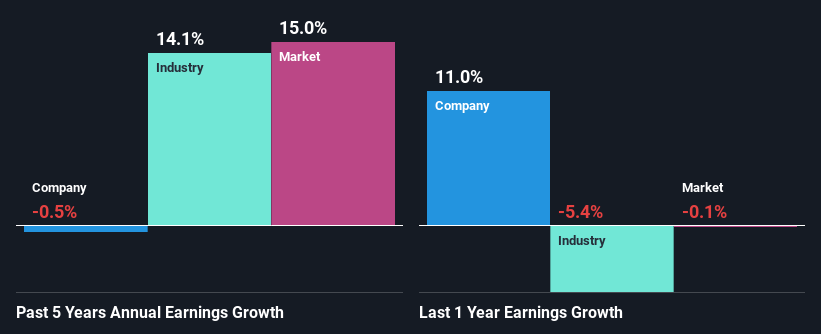Globe International (ASX:GLB) has had a rough month with its share price down 16%. To decide if this trend could continue, we decided to look at its weak fundamentals as they shape the long-term market trends. Particularly, we will be paying attention to Globe International’s ROE today.
Return on equity or ROE is a key measure used to assess how efficiently a company’s management is utilizing the company’s capital. Put another way, it reveals the company’s success at turning shareholder investments into profits.
See our latest analysis for Globe International
How Do You Calculate Return On Equity?
The formula for ROE is:
Return on Equity = Net Profit (from continuing operations) ÷ Shareholders’ Equity
So, based on the above formula, the ROE for Globe International is:
9.3% = AU$6.7m ÷ AU$72m (Based on the trailing twelve months to December 2023).
The ‘return’ is the amount earned after tax over the last twelve months. Another way to think of that is that for every A$1 worth of equity, the company was able to earn A$0.09 in profit.
What Has ROE Got To Do With Earnings Growth?
We have already established that ROE serves as an efficient profit-generating gauge for a company’s future earnings. We now need to evaluate how much profit the company reinvests or “retains” for future growth which then gives us an idea about the growth potential of the company. Generally speaking, other things being equal, firms with a high return on equity and profit retention, have a higher growth rate than firms that don’t share these attributes.
Globe International’s Earnings Growth And 9.3% ROE
On the face of it, Globe International’s ROE is not much to talk about. However, its ROE is similar to the industry average of 7.8%, so we won’t completely dismiss the company. Having said that, Globe International’s net income growth over the past five years is more or less flat. Bear in mind, the company’s ROE is not very high. Hence, this provides some context to the flat earnings growth seen by the company.
Next, on comparing with the industry net income growth, we found that the industry grew its earnings by 14% over the last few years.
Earnings growth is an important metric to consider when valuing a stock. It’s important for an investor to know whether the market has priced in the company’s expected earnings growth (or decline). Doing so will help them establish if the stock’s future looks promising or ominous. If you’re wondering about Globe International’s’s valuation, check out this gauge of its price-to-earnings ratio, as compared to its industry.
Is Globe International Making Efficient Use Of Its Profits?
With a high three-year median payout ratio of 71% (implying that the company keeps only 29% of its income) of its business to reinvest into its business), most of Globe International’s profits are being paid to shareholders, which explains the absence of growth in earnings.
Additionally, Globe International has paid dividends over a period of nine years, which means that the company’s management is determined to pay dividends even if it means little to no earnings growth.
Conclusion
In total, we would have a hard think before deciding on any investment action concerning Globe International. The company has seen a lack of earnings growth as a result of retaining very little profits and whatever little it does retain, is being reinvested at a very low rate of return. So far, we’ve only made a quick discussion around the company’s earnings growth. To gain further insights into Globe International’s past profit growth, check out this visualization of past earnings, revenue and cash flows.
Have feedback on this article? Concerned about the content? Get in touch with us directly. Alternatively, email editorial-team (at) simplywallst.com.
This article by Simply Wall St is general in nature. We provide commentary based on historical data and analyst forecasts only using an unbiased methodology and our articles are not intended to be financial advice. It does not constitute a recommendation to buy or sell any stock, and does not take account of your objectives, or your financial situation. We aim to bring you long-term focused analysis driven by fundamental data. Note that our analysis may not factor in the latest price-sensitive company announcements or qualitative material. Simply Wall St has no position in any stocks mentioned.
Credit: Source link




